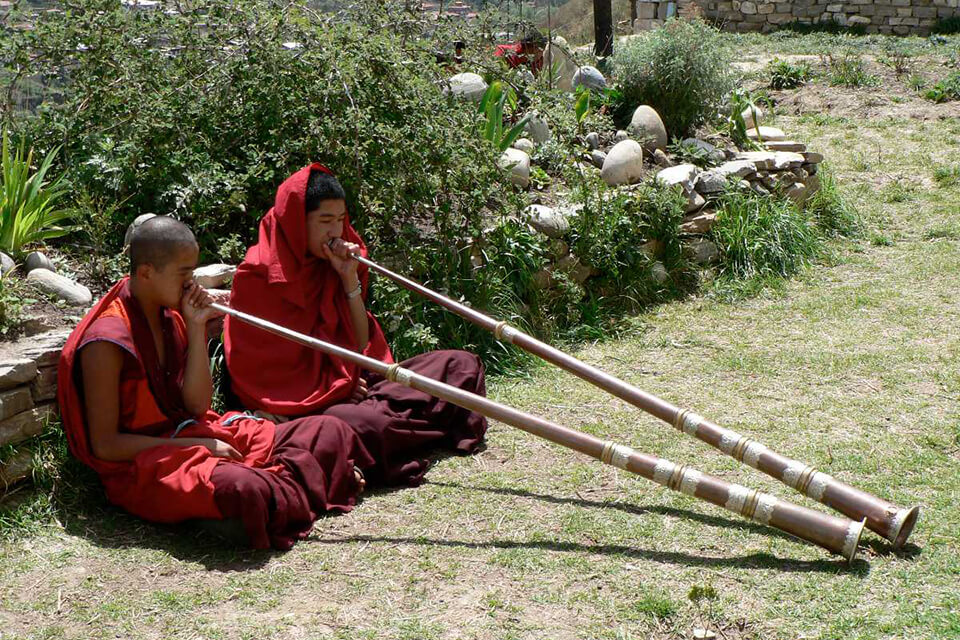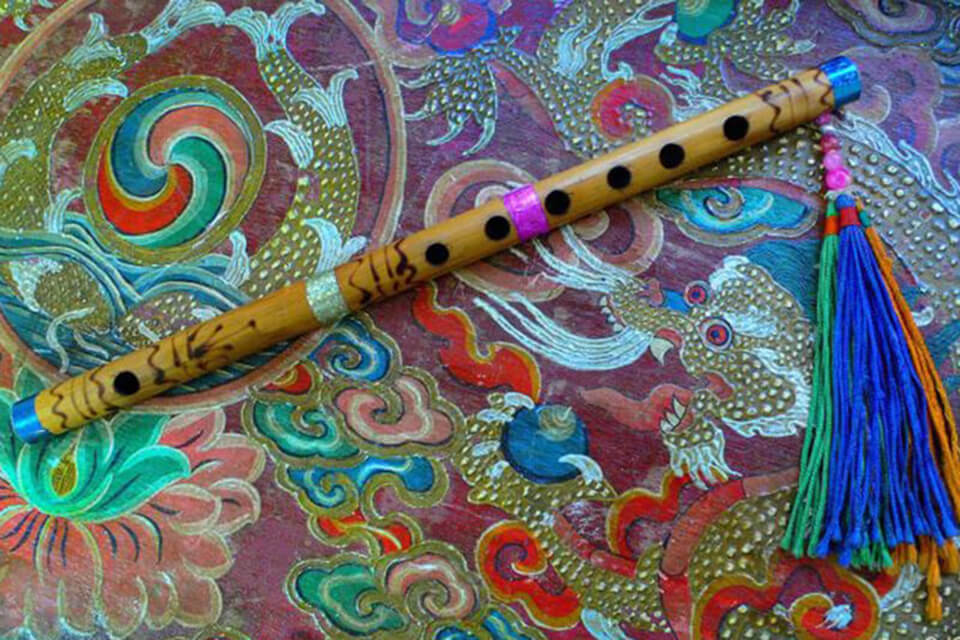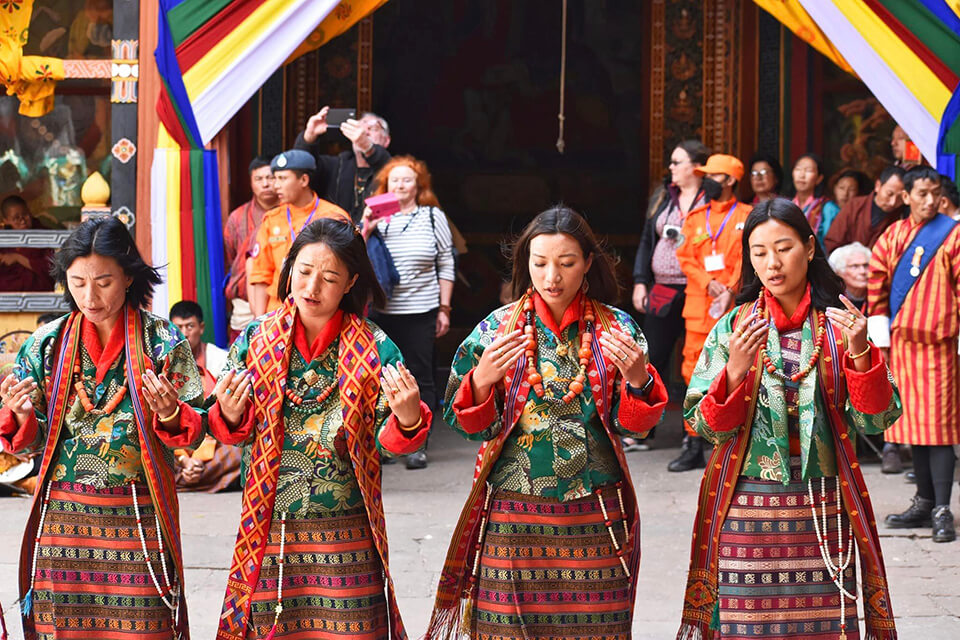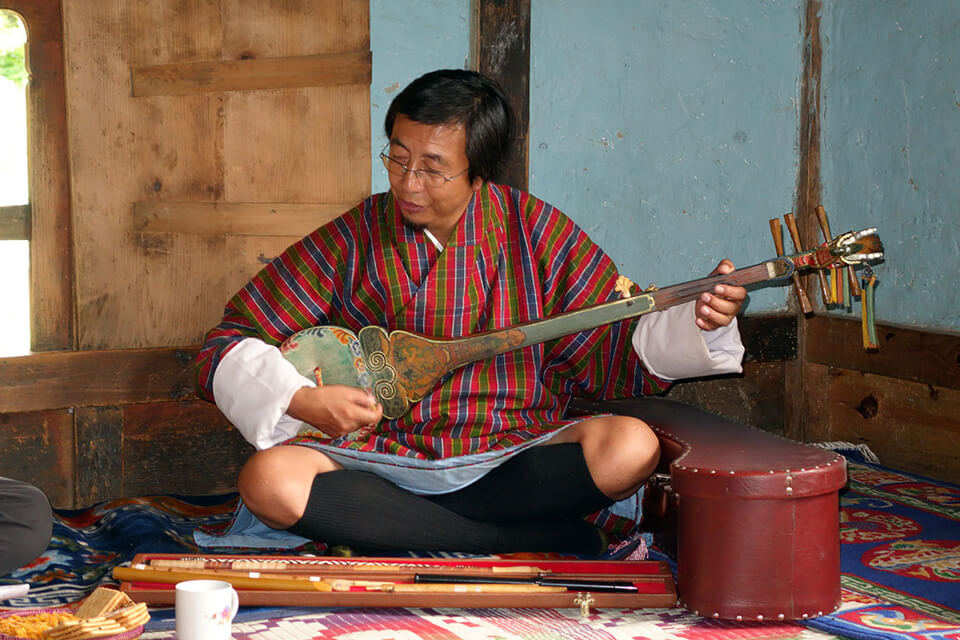Bhutan has a diverse range of traditional musical instruments that play a prominent role in the country’s music and festivities. In this topic, we delve deep into the world of traditional musical instruments in Sri Lanka, providing valuable insights into their evolution, influence on local music, and the best resources for enthusiasts to explore these fascinating instruments.
History of Bhutan Music Culture
The origin of some Bhutan musical instruments can be dated back thousands of years with the domination of traditional music in the melodic landscape of the country. Traditional Bhutanese music encompasses various genres, from folk songs to religious chants and instrumental music. It intertwines vocals, instrumentation, theatre, and dance, creating a vibrant and multifaceted musical experience. The folk music of Bhutan holds a local flavor, with variations across different villages and regions. Religious music is also an integral part of Bhutan’s musical culture, reflecting the spiritual beliefs and practices of the country.
With the introduction of electronic instruments in the 1960s, Bhutan’s music culture witnessed the emergence of Rigas – a new modern popular genre. This modern genre has become popular among the younger generation, blending elements of traditional and contemporary sounds. Rigsar differs from most traditional music in that it uses modern electronic instruments, a quicker tempo, and local languages, particularly Dzongkha and Tsangla. Despite these developments, the traditional music of Bhutan holds a cherished place in the hearts of its people, serving as a powerful medium for storytelling, expressing emotions, and connecting with the nation’s cultural identity.
4 most commonly used Bhutan traditional musical instruments
With the amazing diversity of musical genres, Bhutan is also famous for its wide range of musical instruments. These instruments are not only valued for their unique sounds but also for their cultural and historical significance. Here are 5 most famous of traditional musical instruments of Bhutan:
Drangyen (Lute)
The oldest and most well-known musical instrument from Bhutan is the Drangyen, also known as the Bhutanese lute. It is a stringed instrument that holds great significance in Bhutanese culture and music. Drangyen has an impressive design with many beautiful colors such as green, blue, and red, and a plucked lute, traditionally made from bone, wood, leather, or yak.
A typical Drangyen has a diameter of 6–12 inches and measures around 3–4 feet in length. With the complex string system, Drangyen has been seen as the most difficult musical instrument to master. Drangyen has a total of 6 strings with the three sets of double strings generally divided into “G” (pancham), “C” (sadhaj), and “F” (madhyam). Another intergral part of this musical tool is al string called ting ti, which is turned to the higher octave “C” (shadhaj). It has a distinct sound that is both rich and melodic, often accompanied by traditional Bhutanese songs and dances. The Drangyen is not only a musical instrument but also carries cultural and historical importance in Bhutan, as it is deeply interwoven with the country’s traditions and folklore.
Chiwang (Pewang)
The Chiwang, also known as Pewang, is a traditional musical instrument that holds great cultural significance in Bhutan. This unique instrument is a two-stringed fiddle, originating from Tibet and becoming an integral part of Bhutanese folk music. Crafted from wood, horsehair, and animal skin, the Chiwang exhibits both visual elegance and a distinct sound. The construction of a Chiwang requires exceptional craftsmanship and attention to detail. Its resonator is typically made of juniper or cedar wood, taking on an elongated oval or boat-like shape. The top is covered with animal skin, traditionally sourced from goats or sheep. Two strings, made of horsehair, attach to an ivory or wooden bridge, allowing for a broad range of melodic tones. The bow used to play the Chiwang is typically made of bamboo and horsehair, providing the musician with the means to produce captivating sounds.
Due to the interesting design, playing the Chiwang demands skill and precision. The bow strokes the strings, resulting in a mix of resonant tones, harmonies, and melodies. The simplicity of its design allows for a remarkable variety of expressions, ranging from spirited and energetic notes to melancholic and haunting melodies. The Chiwang serves as a means of emotional communication, storytelling, and cultural expression. Beyond being a musical instrument, the Chiwang symbolizes Bhutanese identity and cultural heritage. It embodies the country’s traditions and connects people to their history and ancestral roots. The soul-stirring sounds of the Chiwang encapsulate the essence of Bhutanese music, transporting listeners to the mystical landscapes of the Himalayan kingdom. In recent years, the Chiwang has gained recognition and appreciation on a global scale, finding its way into contemporary compositions and bridging the gap between tradition and modernity.
Lim (Flute)
The Lim, a traditional Bhutanese flute, is a captivating musical instrument that holds great significance in the country’s cultural heritage. The distinct sound and mesmerizing melodies produced by the Lim have made it an integral part of Bhutanese music for centuries. The Lim is crafted from bamboo, and carefully selected for its quality and resonance. With its simple cylindrical shape and uniform bore, the Lim is designed to create beautiful tones and rich harmonies. It has finger holes positioned along its length, allowing musicians to manipulate the airflow and produce a variety of notes. The skill required to play the Lim is honed through dedicated practice and a deep understanding of Bhutanese musical traditions. Renowned Lim players are respected and revered, showcasing their mastery of this exquisite instrument to captivate audiences across the country.
In Bhutanese folklore and religious traditions, the Lim is believed to have the power to invoke spiritual connections and convey emotions. When played, its enchanting melodies evoke a sense of tranquility and contemplation, transporting listeners to a realm of serenity and beauty. Throughout Bhutan’s festivals, religious ceremonies, and social gatherings, the Lim takes center stage, accompanying traditional dances and songs with its serene and melodic tunes. As the Lim continues to be cherished by the Bhutanese people, it symbolizes the cultural identity and spiritual essence of a nation that holds its traditions dear. Whether it’s the awe-inspiring performances during religious rituals or the intimate gatherings where stories are shared through music, the Lim remains a cherished and treasured instrument that connects generations and preserves the essence of Bhutanese musical heritage.
Yangchen
The Yangchen, a traditional bamboo flute, holds a prominent place in Bhutanese music and culture. Its hauntingly beautiful melodies create an enchanting atmosphere, captivating listeners with its serene and emotive tones. Crafted from a single piece of bamboo, the Yangchen has a simple design, consisting of finger holes and a blowhole. The process of making a Yangchen involves carefully selecting and preparing the bamboo, allowing it to achieve the perfect balance between flexibility and strength. The flute’s length and diameter determine its pitch and range of notes. The art of playing the Yangchen requires skill and precision, as musicians manipulate their breath and finger placement to produce different tones and expressiveness. The melodic nature of the Yangchen makes it a versatile instrument, often used to accompany traditional songs and dances during cultural events and festive celebrations. Its soulful sound evokes a sense of tranquility and deep connection with nature, reflecting the spiritual essence of Bhutanese traditions.
The Yangchen embodies the rich musical heritage of Bhutan, passing down stories and emotions through its enchanting melodies. Whether played in intimate gatherings or on grand stages, the Yangchen continues to captivate audiences, contributing to the preservation and appreciation of Bhutanese musical traditions. Its delicate yet powerful presence reminds us of the profound beauty found in simplicity and reinforces the timeless importance of cultural expression in shaping our collective identity.
Places to enjoy unique folk music in Bhutan
Bhutan, known as the “Land of the Thunder Dragon,” offers a vibrant and diverse musical landscape deeply rooted in its rich cultural heritage. Across the country, there are several places where travelers can immerse themselves in the enchanting melodies of Bhutanese folk music.
Thimphu
One such place is Thimphu, the capital city of Bhutan. Here, you can experience the traditional folk music style known as Zhungdra. Developed in the 17th century, Zhungdra is one of the two main genres of Bhutanese folk music. It is characterized by extended vocal tones and intricate instrumental melodies. Zhungdra is often performed during important religious festivals and cultural events, such as the annual Thimphu Tshechu. The soulful melodies of Zhungdra capture the essence of Bhutanese spirituality and cultural traditions.
Paro
In Paro, another region known for its musical heritage, you can enjoy the captivating tunes of Boedra. Boedra is the second main genre of Bhutanese folk music, with its origins influenced by Tibetan folk music. It is characterized by the use of instruments such as the chiwang, which symbolizes a horse. The melodies of Boedra are often accompanied by lively dances, and the songs tell stories inspired by Buddhist teachings and allegories. Paro is also home to the famous Paro Tshechu, where locals and visitors gather to witness the vibrant performances of Boedra and other folk music styles.
Punakha
Punakha, the ancient capital of Bhutan, is renowned for its unique folk music styles known as Zhey and Zhem. Zhey is predominantly performed by men, while Zhem is performed by women. These folk songs are often associated with important festivals and celebrations, including the grand Royal Weddings and the annual Punakha Tshechu. The lively and rhythmic tunes of Zhey and Zhem, accompanied by spirited dances, create a joyous and festive atmosphere that is deeply ingrained in the cultural fabric of Punakha.
Gasa
Heading towards Gasa, you will encounter the captivating folk music style of Tsangmo. Tsangmo is a unique form of folk music where literary couplets are sung in two parts. The first half establishes a scenario or theme, while the second half represents an emotion, such as love, hate, ridicule, or even abuse. Tsangmo is a song duel, where different groups engage in a musical exchange, weaving stories and discussing various matters through melodic verses. This form of folk music showcases the creativity and wit of the Bhutanese people and is often performed during special cultural events and gatherings.
Are you overwhelmed by the ancient music and special musical instruments of Bhutan? Booking Bhutan tours to fully explore this unique beauty with our local guides!

